obsidian dragons
Handmade Mala - 54 silver obsidian beads.
Handmade Mala - 54 silver obsidian beads.
Couldn't load pickup availability
Handmade Mala - 54 silver obsidian beads.
This handcrafted obsidian Mala is dedicated to the practice of Vajrakilaya, Phurba in Tibetan.
The one who conquers demons.
As a gemologist graduated from the National Institute of Gemmology in Paris, all our materials are appraised and certified.
As Malakara, we make all of our malas ourselves, scrupulously respecting tradition.
Handmade mala made to order. Allow between 8 and 10 days for production after purchase.
Why a 54-bead handmade mala?
A handmade Mala with 54 beads is also common, although less common than one with 108 beads.
Malas with 54 beads are used for meditation practices and mantra recitation.
The 54 beads are associated with specific aspects of deity or cosmic cycles.
In other cases, they can be seen as half of 108, symbolizing duality and harmony between opposing forces.
Why a 54-bead handcrafted mala dedicated to the deity Vajrakilaya/Phurba? 
Vajrakilaya or Vajrakila (tib. Do-rje Phur-ba) "the adamantine dagger", called
also Vajrakumara (tib. Dor-je gzhon-nu) "the young diamond". It is the form
extremely wrathful form of the Buddha Vajrasattva, the semi-wrathful form being
Vajra Vidharana (Tib. Dorje Namjom) and the wrathful form Vajrapani.
Vajrasattva is a Buddha of the Vajrayāna school. For more information about him, please click on this link, which will take you directly to our dedicated blog post.
Vajrakilaya is revered as a protective deity in Tantric Buddhism. His energy is associated with the destruction of obstacles and the purification of negative emotions. Therefore, a Mala dedicated to Vajrakilaya is used in meditation and mantra recitation practices aimed at strengthening spiritual protection and removing inner and outer obstacles.
The Phurba, also known as the Buddhist dagger, is a ritual instrument used in Tibetan Buddhism to defeat negative forces and protect practitioners. It also symbolizes the ability to pierce and transform the illusions of the ego. The association of a Mala with Vajrakilaya and the Phurba therefore emphasizes the energy of transformation and purification that can be sought in spiritual practice.
To learn more about phurba, please click on this text, which will take you directly to our dedicated blog post on the subject.
ELEMENTS MAKING UP THIS ARTISANAL MALA AND ITS SYMBOLIC:
54 exceptional quality silver obsidian beads from Mexico.
Diameter of 14mm for each pearl.
Obsidian is a natural volcanic glass formed by the rapid cooling of lava. It is often associated with qualities of protection, purification, and transformation. In some cultures and traditions, it is considered a stone of strength and courage. For the practice of Vajrakilaya, which aims to remove obstacles and purify negative emotions, obsidian is considered a symbolically appropriate stone.
Vajrakilaya is revered as a protective deity in Tantric Buddhism. Obsidian is also associated with protective qualities against negative energies and unwanted external influences.
By using obsidian to make a Mala dedicated to Vajrakilaya, practitioners enhance this protective energy in their spiritual practice.
Obsidian is also known for its transformative power. It is often considered a natural material that helps dissolve emotional blockages and promote personal growth. In the practice of Vajrakilaya, which aims to transcend obstacles and transform negative emotions into wisdom, obsidian can be used as a tool to support this inner transformation.
5 very realistic buffalo bone skulls entirely carved by hand also adorn this artisanal mala
The five skulls embody the five Kleshas, also known as the five afflictions:
- Avidya: ignorance
- Asmitā: the feeling of "me", the ego
- Rāga: desire, attachment
- Dvesha: aversion, anger
- Abhinivesha: fear of death, attachment to life

The finishing bead of this handcrafted mala, also called a "guru bead", represents a dragon's head 27mm high by 25mm, and is carved from buffalo bone .
The Dragon: Guardian of the Dharma in Buddhism
The dragon, a universal legendary creature, occupies a significant place within several Buddhist schools, symbolizing the richness of the spiritual tradition. Although its role as guardian of the Dharma is not universal, some schools attribute a special significance to the dragon, thus reinforcing the protection of the sacred teachings of the Buddha.
- Chan (Zen) School: Within the Chan tradition, the dragon is seen as a symbol of awakened nature. Its power and grace represent the strength needed to overcome obstacles on the path to enlightenment. The representation of the dragon thus becomes a source of inspiration, propagating perseverance in meditation and spiritual quest.
- Pure Land School: The Pure Land school, devoted to Amitabha Buddha, frequently uses symbols such as the lotus and the dragon. Here, the dragon is seen as the guardian protecting the Pure Land, a spiritual realm devoid of suffering where followers aspire to be reborn.
- Shingon School: Shingon Buddhism, a Japanese esoteric school, celebrates complex rituals involving deities and spiritual forces. In these practices, the dragon is invoked as the protector of esoteric teachings, thus ensuring the preservation and correct transmission of spiritual secrets.
- Tendai School: The Tendai school, embracing a wide range of teachings, integrates the idea of the dragon as guardian of the Dharma within the symbolism of protective deities. Powerful and respected, the dragon embodies the protection of the teachings leading to awakening.
- Nyingma School (Tibetan Buddhism): In Tibetan Buddhism, particularly in the Nyingma school, nagas, often depicted as dragons, are considered the guardians of sacred teachings. Rituals associated with nagas are intended to provide protection from negative influences and promote spiritual prosperity.
- Kagyu School: With an emphasis on meditation and direct experience, the Kagyu school incorporates purification rituals linked to the naga. The dragon is invoked to ensure mental clarity and provide spiritual protection.
- Sakya School: Known for its esoteric teachings, the Sakya school incorporates protective rituals involving the dragon. These practices often aim to pacify negative energies and establish spiritual harmony.
- Gelug School: Founded by Tsongkhapa, the Gelug school incorporates the dragon into protective rituals in certain practices, thus reinforcing the preservation of the Buddha's teachings.
Thus, across these various schools, the dragon emerges as a symbolic guardian of the Dharma, testifying to the uniqueness and diversity of interpretations within Buddhism.

The whole is decorated with intercalary discs also made of buffalo bone and copper beads .
We have also, as a finishing touch, integrated a phurba handcrafted in 925 silver and copper , a Buddhist dagger, allowing you to defeat demons. in 925 silver and copper. We are giving you the link to its explanation here
After the phurba, we used an authentic Tibetan DZI with two eyes
The meaning of the two-eyed Dzis: balance, harmony and protection
Two-eyed Dzis hold a special place among Tibetan beads because of their deep meaning related to balance, harmony and protection. These unique Dzis, adorned with two eye-shaped designs, carry powerful spiritual messages.
The 2 eyes allow harmony between husband and wife to build a happy family, to ensure success and good relationships with others. The 2-eye pearl represents the harmonious concept of Yin and Yang, the balance of life. So this pearl strengthens stability and balance.
-
The harmony of opposing forces The two eyes on the two-eyed Dzis symbolize harmony between opposing forces. They represent the balance between yin and yang, feminine and masculine, and the complementary polarities of the universe. These Dzis are a reminder of the importance of finding inner balance and cultivating harmony between the conflicting aspects of life.
-
Protection and Spiritual Clarity The two-eyed Dzis are renowned for their power of protection and spiritual clarity . They act as guardians, protecting their wearer from negative energies and unhealthy influences. These Dzis also allow one to obtain a clear vision of situations and choices to be made, thus promoting informed decision-making.
-
Inner Balance and Unity The two-eyed Dzis are associated with inner balance and unity of being . They invite one to find harmony between the body, mind and soul, as well as between the different facets of our personality. These Dzis encourage the development of a unified consciousness and the integration of all parts of oneself.
-
Relationship and Connection The two eyes on the two-eyed Dzis also symbolize the relationship and connection with others . They remind us of the importance of harmonious relationships and balanced communication. These Dzis promote mutual understanding, compassion and unconditional love in interactions with others.
-
The Use of Two-Eyed Dzis Two-eyed Dzis are often worn as protective amulets and talismans to promote balance and spiritual clarity. They can be incorporated into jewelry such as necklaces, bracelets, or earrings. Some Buddhist practitioners also use them as meditation objects to cultivate inner harmony.
Two-eyed Dzis symbolize balance, harmony, and protection . Their two eyes represent the harmony of opposing forces and invite one to cultivate inner balance, unity, and connection with others. Two-eyed Dzis are powerful spiritual reminders to seek harmony and balance in all aspects of life.
Finally, the whole thing ends with a tassel which is considered a form of spiritual protection. It is supposed to protect the practitioner from negative influences and obstacles on the path of meditation and spirituality.
Handcrafted Mala, Handcrafted Mala, Handcrafted Mala, Handcrafted Mala, Handcrafted Mala, Handcrafted Mala, Handcrafted Mala, Handcrafted Mala, Handcrafted Mala, Handcrafted Mala, Handcrafted Mala, Handcrafted Mala, Handcrafted Mala, Handcrafted Mala, Handcrafted Mala, Handcrafted Mala, Handcrafted Mala , Handcrafted Mala, Handcrafted Mala, Handcrafted Mala, Handcrafted Mala, Handcrafted Mala, Handcrafted Mala, Mala artisanal, artisanal mala, artisanal mala, artisanal mala, artisanal mala
Share
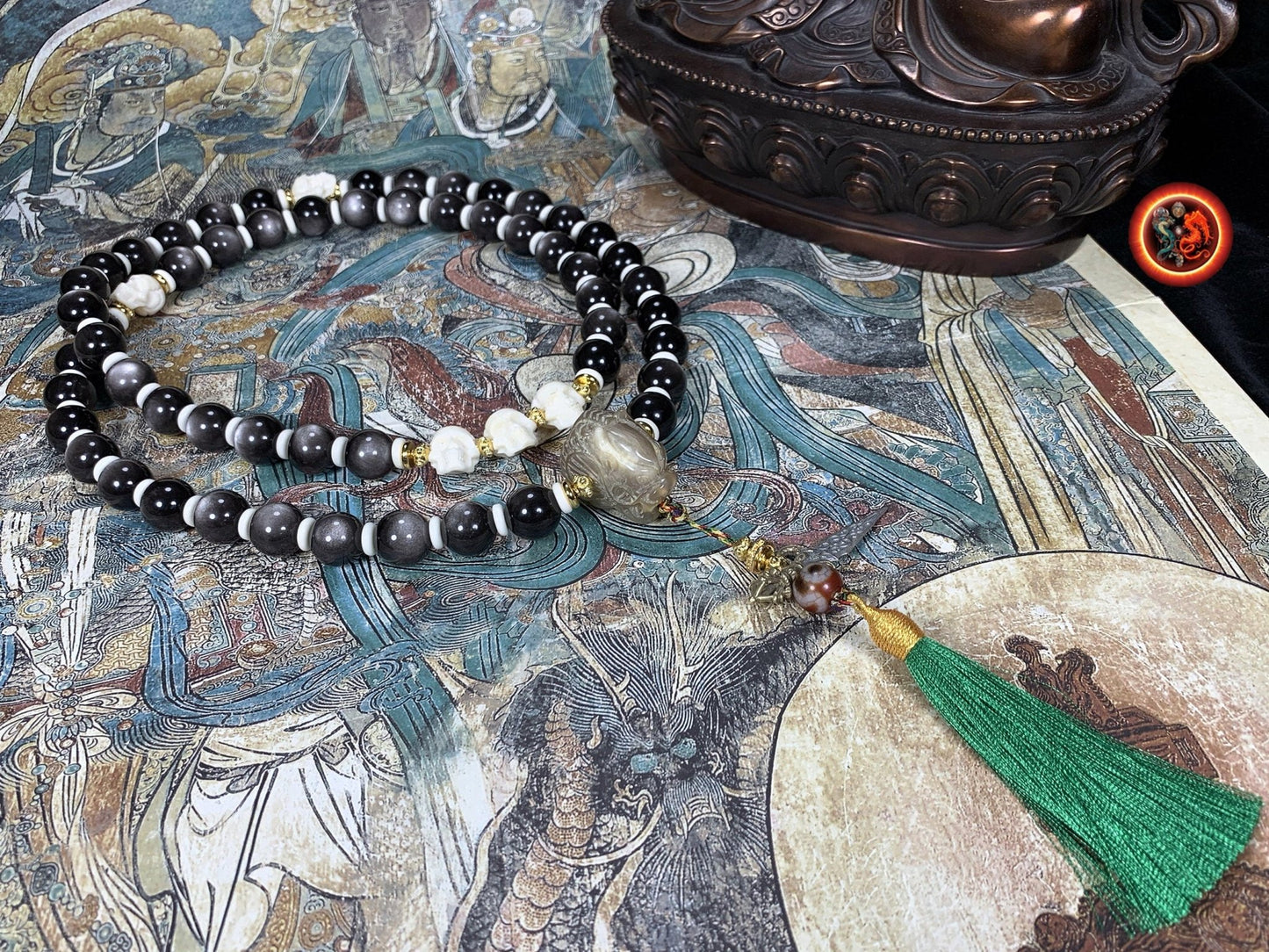

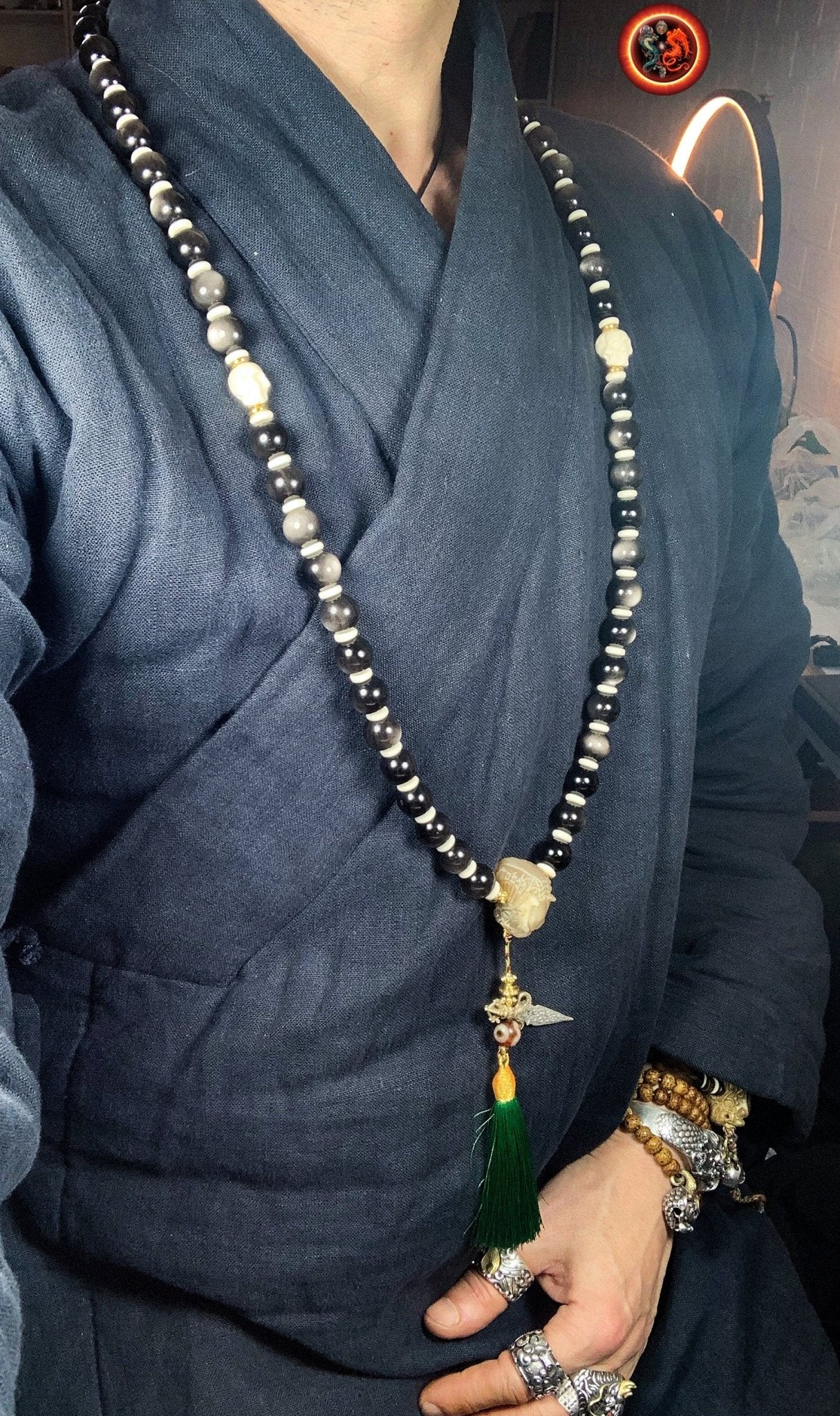
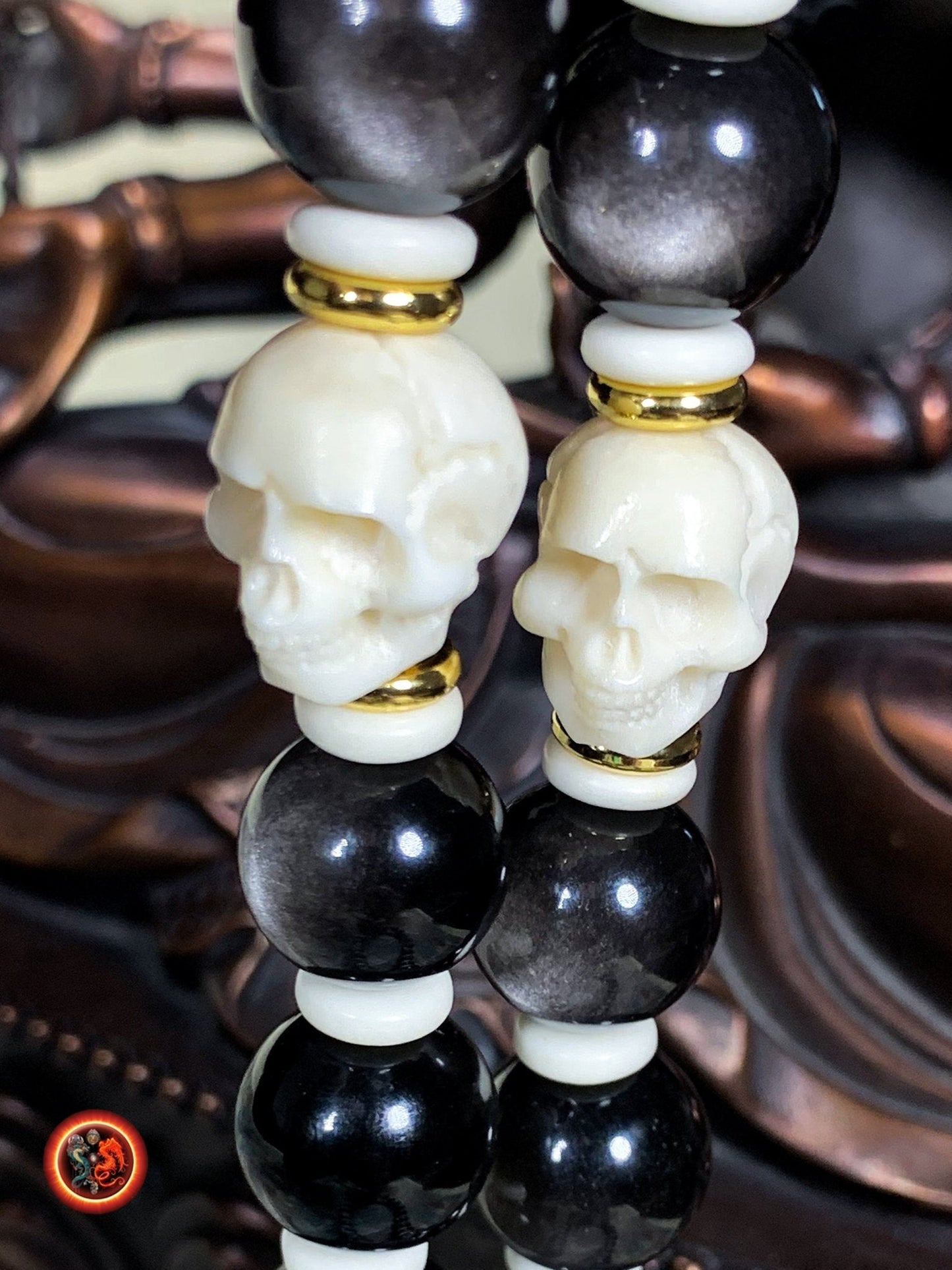
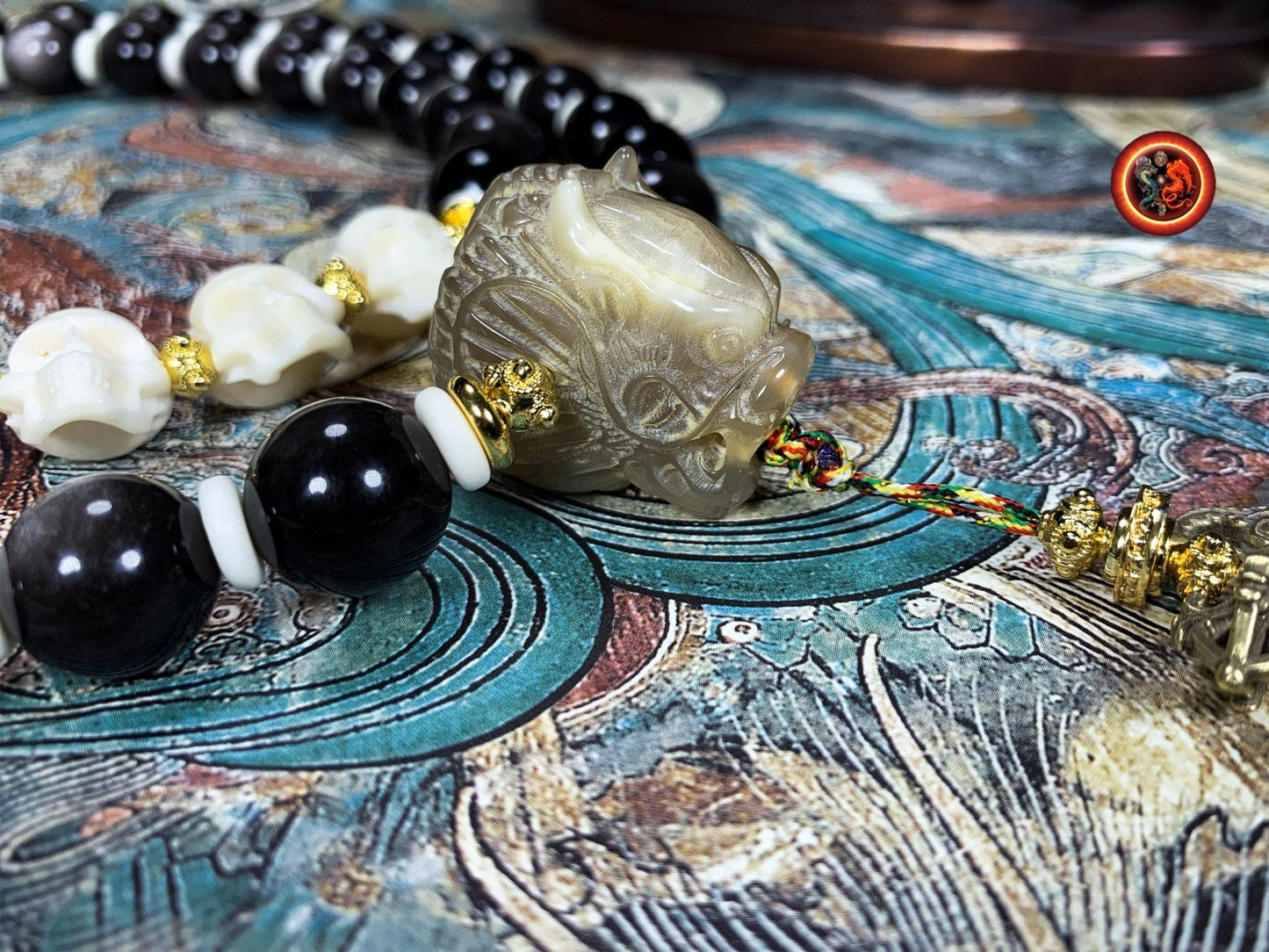
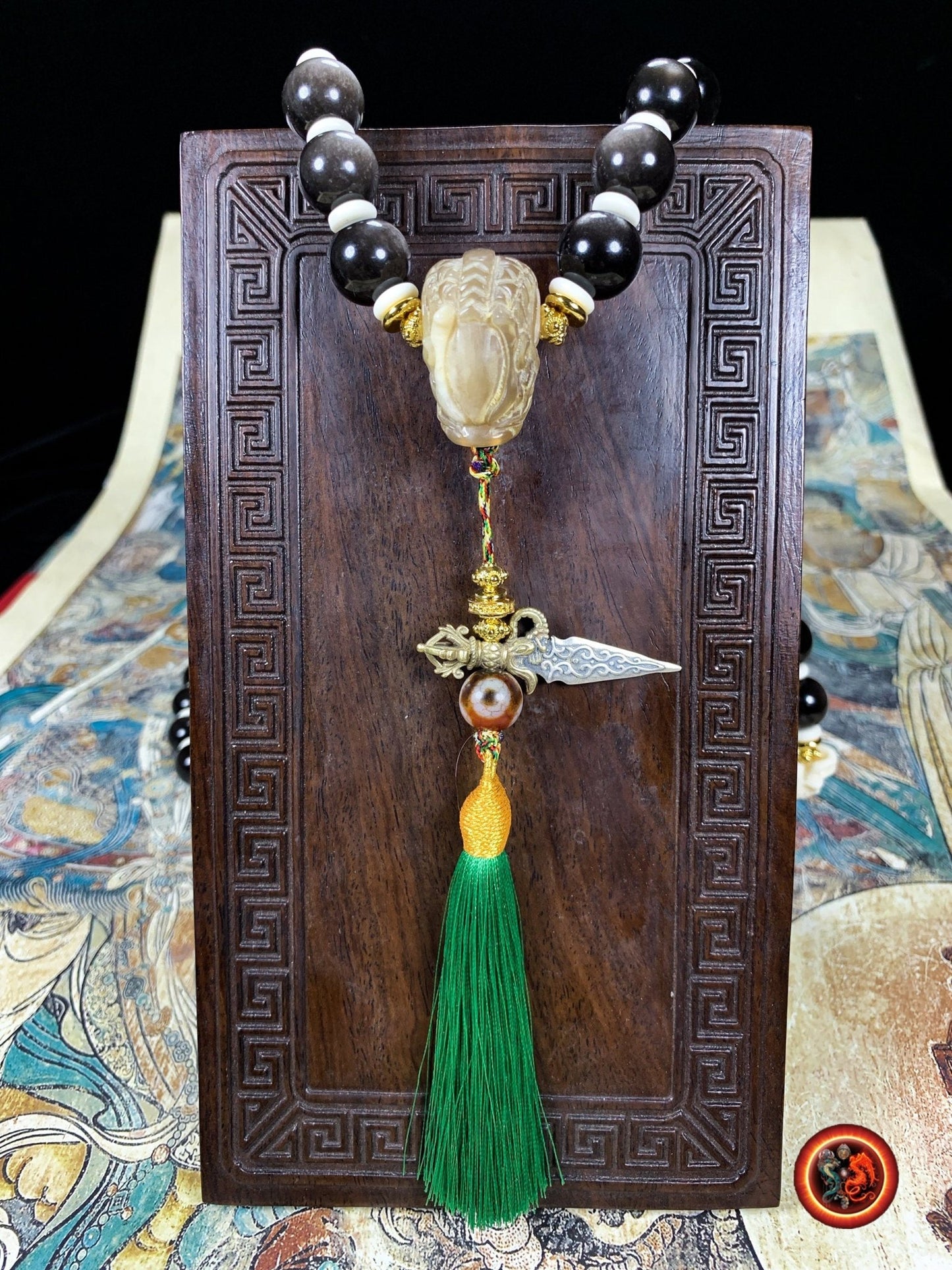
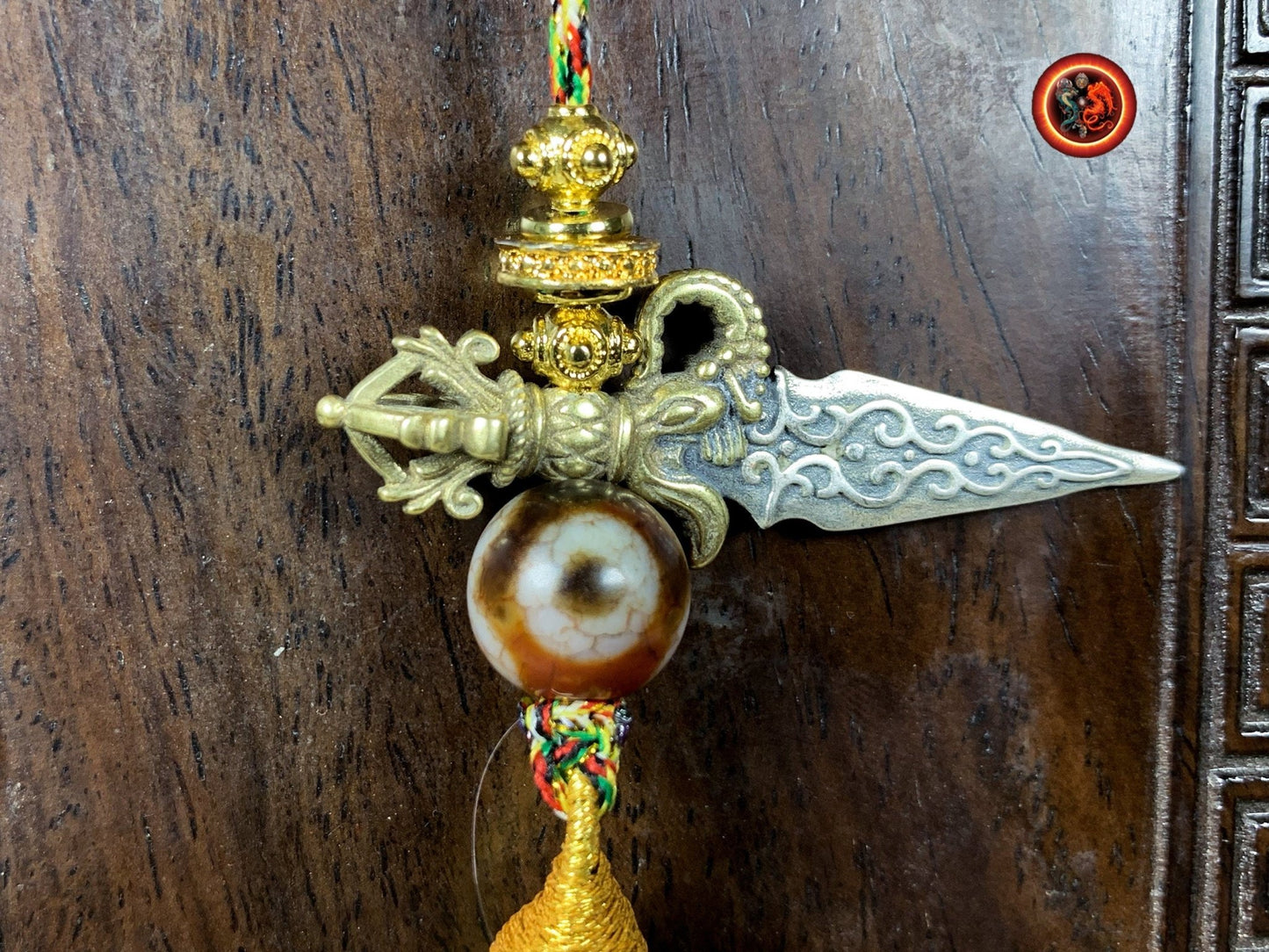
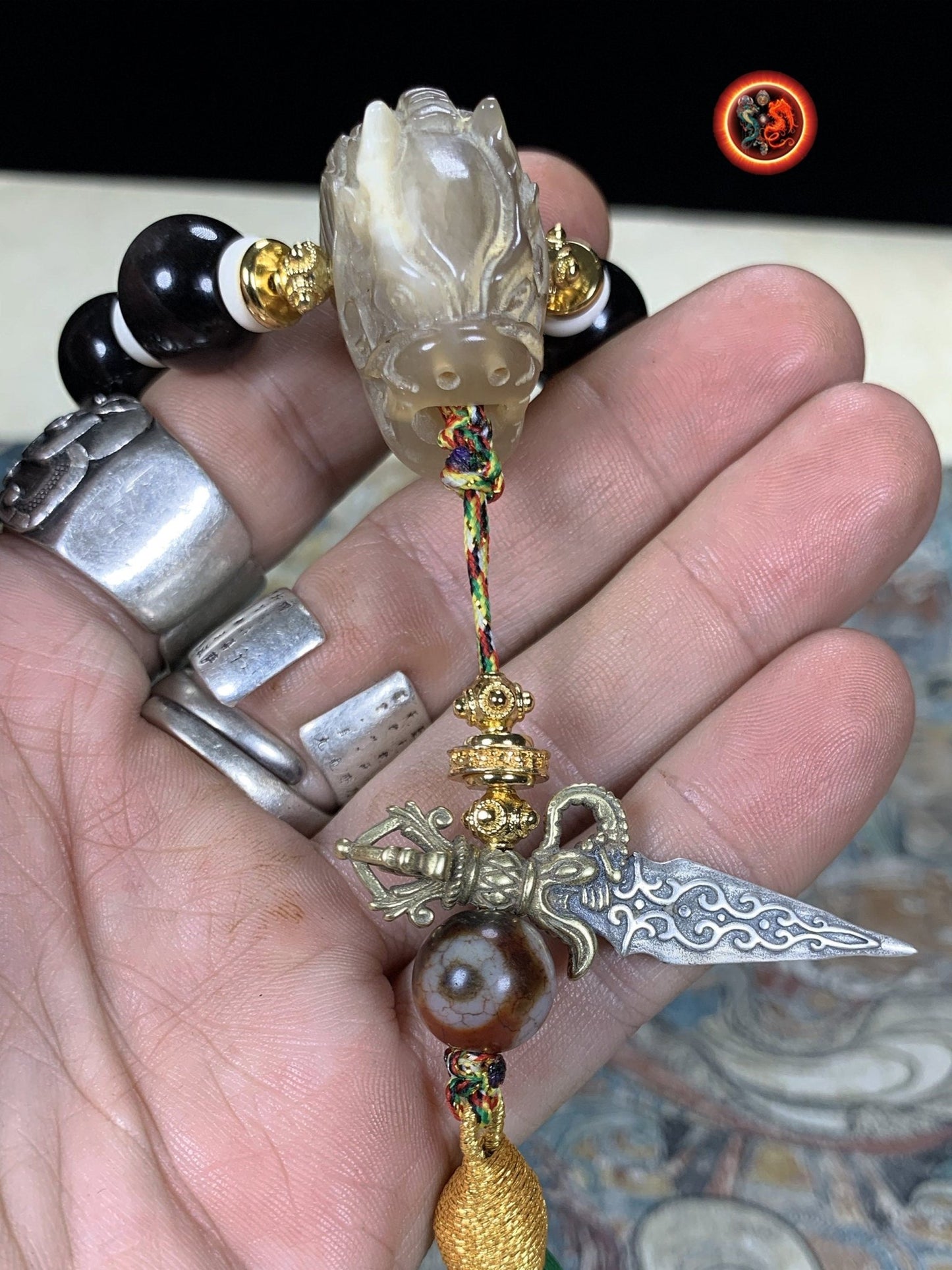
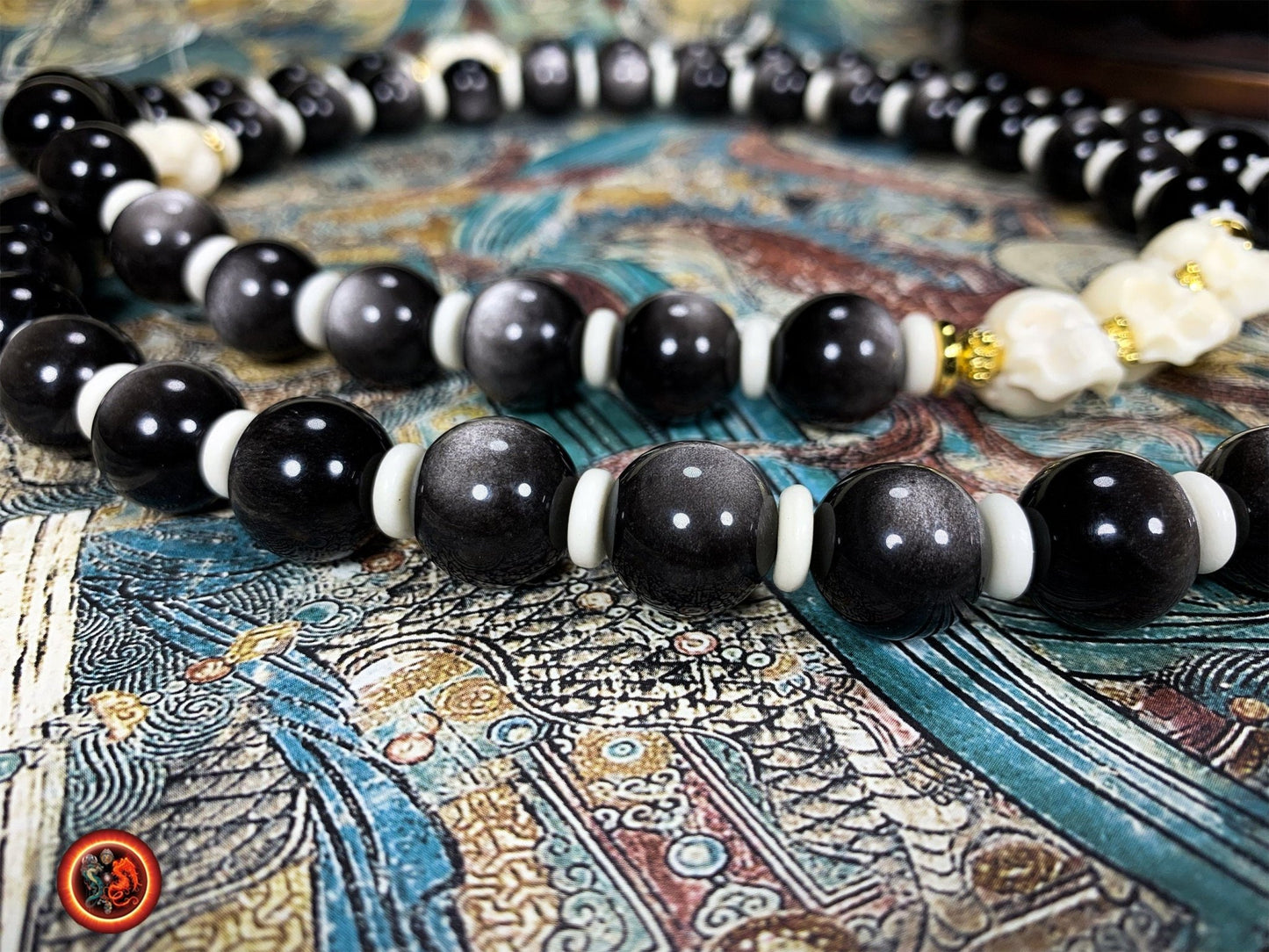
-
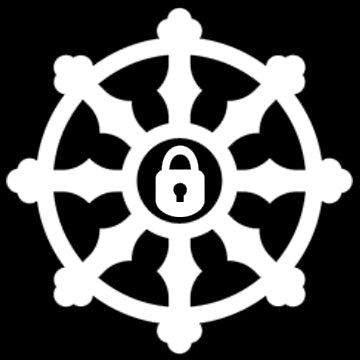
100% secure payment
3 times interest-free option with Scalapay
-

Free delivery in France and internationally
14 days money back guarantee after delivery (see our conditions of sale)
-

Excellent customer service
Live chat
Whatsapp +33674049312
Let customers speak for us
from 901 reviewsLe collier est superbe, et ce pendentif magnifique, ses détails! et l'odeur du bois de santal que c'est agréable! Qualité extra! Contact excellent avec Jérémy, merci beaucoup pour votre gentillesse! Quelle qualité, vivement le mala !

L'objet est très joli et malgré que je ne sois pas un spécialiste, je trouve que le crystal est beau. Il n'est pas parfait et cela me rassure sur la qualité du produit qui est sensé être naturel donc imparfait.
Très bien emballé et en plus housse de rangement offerte.
MERCI

Je suis très satisfaite, livraison rapide et soigné. J'ai appréciée la communication avec Jérémy… L'article est superbe, plus jolie que ce que je pensais.

J’ai commandé un crâne de dragon, il est super beau et très puissant. Je l’adore 😍 Et l’envoi a été très rapide 🤗 merci 🙏🏻

Absolument magnifique,il m’appelait ce bracelet et je suis ravie je ne vais plus le quitter merci 🙏🏼😍

Merci pour votre envoi, la pierre est magnifique, merci..

bracelet puissant, je suis content de mon achat

Bonjour je viens de le recevoir, il est magnifique encore mieux que j’espérais merci beaucoup.
Article de qualité et très bien emballé

Cet artisan est gémologue, il travaille avec des artisans qui sont des vrais artistes, je suis bluffé par la qualité des ouvrages sur l’argent et sa qualité. Quand à la qualité des pierres pas besoin d’être gémologue pour voir la qualité exceptionnelle des pierres, encore une fois le travail de sculpture est exceptionnel.
Mon mala traditionnel est une pure merveille dans la tradition originelle. Le ghau est une merveille qui me comble.
Bref que dire de plus :). Allez sur son site.
PS : vendeur qui connait son métier et les traditions bouddhistes ce qui est un plus en plus :)

Cette petite vanité est ravissante, très bien sculptée et la livraison a été parfaite. L'objet bien protégé et l'envoi très rapide.

Pièces de qualité envoie rapide

Ce crâne est un Etre de Lumière. Attirant , inspirant , "parlant".
Il est un Ami qui tire mes pensées vers le Haut.
Ses énergies vibrent à des fréquences élevées. Il est puissant dans la douceur.
Un crâne de Dragon m'assite également. Merveilleux !

Très beaux bracelet et très puissants

Magnifique crâne givré de l'Himalaya.

cette chevalière est tres bien réalisé, avec beaucoup de détails, je suis heureux de l'avoir














